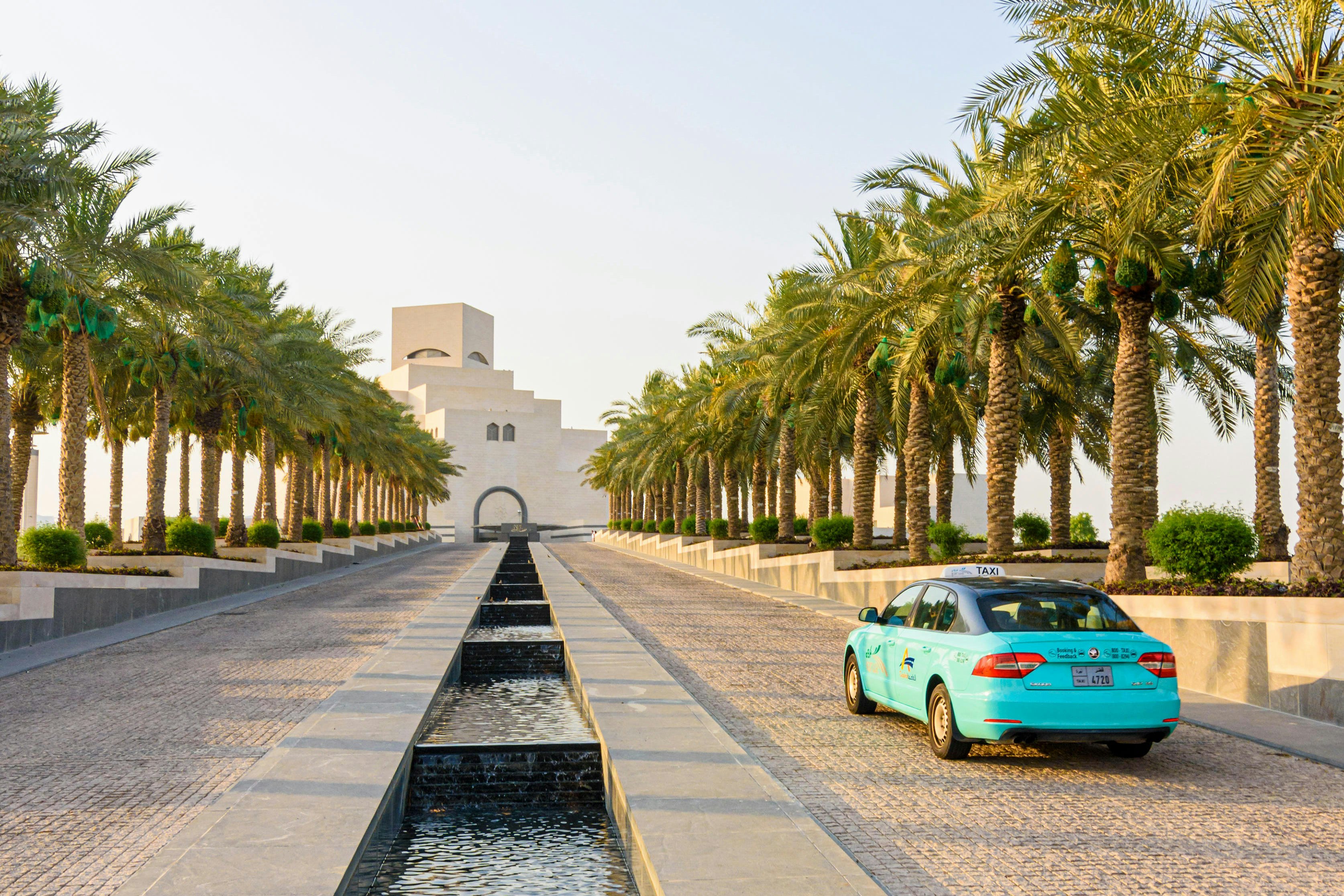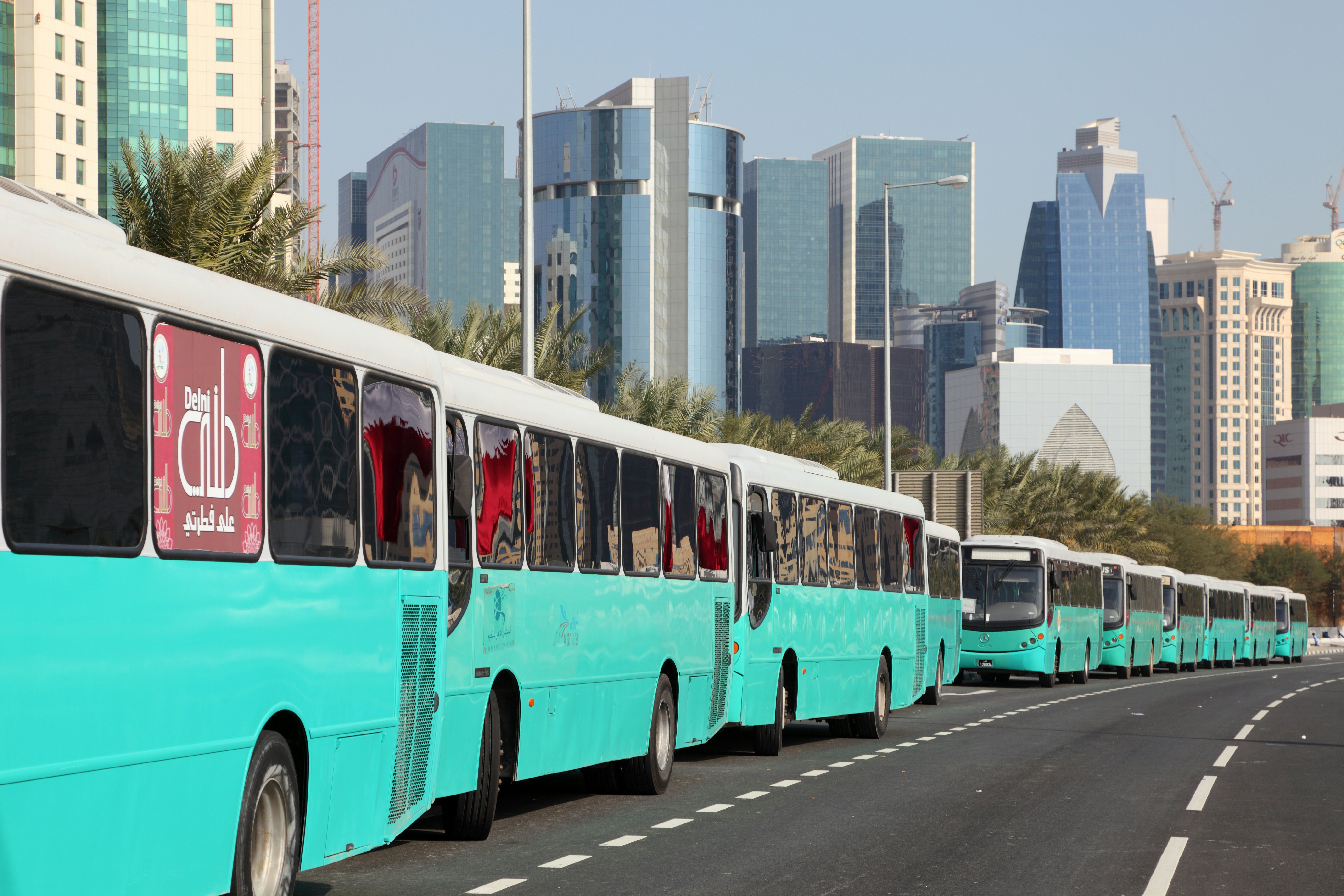
The 30 best countries, cities and regions to visit in 2025

Jul 24, 2022 • 5 min read

You don’t need to rent a car to explore Doha, thanks to its ultra-modern metro and tram systems and widely available taxis © urbazon / Getty Images
It’s not hard to explore far and wide in diminutive but exciting Qatar. It should come as no surprise that this an oil-rich country, many locals prefer to drive, often behind the wheel of eye-wateringly expensive sports cars. Yet the cheap and efficient Doha Metro makes getting around this Gulf nation’s relatively small capital and sister city Lusail a breeze for visitors, with a government bus network serving destinations farther away.
Taxis and ride-hailing services are surprisingly affordable, while visitors can rent bicycles and electric scooters to explore Doha’s sweeping Corniche and beyond.
Here are the best ways to get around Qatar, a rapidly developing corner of the Arabian Peninsula.
With 37 eye-catching stations inspired by traditional caravansaries, the Doha Metro, opened in 2019, is one of the world’s most architecturally striking subway systems. It’s also ultra-cheap, with all trips costing just QR2 and total journey costs capped at QR6 per day. Intersecting at Msheireb in the heart of Doha, the system’s three lines (red, green and gold) offer regular and reliable services. The driverless, mostly underground trains generally run every few minutes from 6am to 11pm Sunday to Wednesday, until midnight Thursday and Saturday, and from 2pm to midnight on Friday, with operating hours typically extended during special events.
A standard Qatar Rail travel card costs QR10 and can be topped up at metro stations or via the Qatar Rail app (minimum QR5). You can also use the travel card on the Lusail Tram, which is connected to the Doha Metro. The tram has an orange line in service, with three more lines in development. If you stump up QR100 on a Goldclub travel card, you’ll be relaxing in larger, more comfortable seats in a dedicated carriage for the journey price of QR10.

Managed by Qatar’s government-owned transport company Mowasalat, turquoise-hued Karwa taxis are clean, affordable and strictly metered, with the flag fare at the airport starting at QR25 and then QR1.6 per kilometer. Within Doha, the fare starts at QR4, with an additional QR1.6 per kilometer. Outside Doha, you’ll pay QR1.9 per kilometer. You can pay with cash or card or using the Karwa app (for iOS and Android).
Even cheaper and often more convenient are Qatar’s main ride-hailing services Uber and Careem, with rides typically costing less per journey than you’ll pay in most developed countries, partly because of low fuel prices. Though both services currently accept cash, most users pay through the app. Rarely (if ever) will you be matched with a driver who doesn’t speak at least some English.

The modern and efficient Karwa bus system (also run by Mowasalat) connects Doha with just about every town beyond the city limits. (There aren’t many of them.) However, travel can be slow going because of reduced speed limits for buses on major highways.
A Karwa Smart Card is required for travel. Costing from QR10 for two journeys within a 24-hour period, the cards can be purchased at ticket vending machines at Hamad International Airport, bus stations, The Pearl, Mall of Qatar and partner merchants.
While Doha’s main streets are not designed to be shared with cyclists, there are a number of dedicated areas for a safe, leisurely pedal, including Doha’s 7km (4.3-mile) seafront Corniche and the sprawling adjacent Al Bidda Park, with bike rental available from the likes of Saikl Bike.
Dockless electric scooter rental is increasingly available around Doha from companies including Loop Mobility and Mowsalat-owned Falcon Ride. Simply download the relevant app, register your details and head off.
More-serious cyclists can tackle Doha’s 33km (20.5-mile) Olympic Cycling Track. Opened in 2020, the world’s longest continuous cycling path links Doha with the small coastal city of Al Khor to the north, with 29 tunnels and five bridges allowing cyclists to pedal its entire length without stopping. Since the bulk of the trail hugs the highway through the desert, there’s not much to pause for anyway.
While recent statistics suggest that Qatar’s roads are becoming safer, driving a rental car can be a stressful undertaking in a country where speeding and tailgating are common, and turn signals seem to be optional. If you’re a confident driver, however, renting a car is a great way to visit remote attractions that aren’t well served by public transport such as Al Zubarah Fort and the mysterious Al Jassasiya Rock Carvings, especially if you prefer to head out on your own instead of on an organized tour.
Tourist eligibility to drive in Qatar varies by nationality, so do your homework before you plan to zoom off. And keep in mind that the penalty for running a red light is a hefty QR6000.
Pedestrian walkways – let alone accessible pedestrian walkways – are still a work in progress in Qatar. But its state-of-the-art metro and tram systems cater well to travelers with limited mobility and other accessible travel needs.
All metro and tram stations are spacious, with platforms all wheelchair accessible. Audio and visual announcements are made at each stop, and all trains and trams have space for manual and electric wheelchairs, along with dedicated seating areas and drop-off areas for passengers with limited mobility. Tactile paths are designed to assist with navigation for riders with visual impairment, and bathrooms that cater for travelers with disabilities are available at every station.
Karwa buses are wheelchair accessible, and Karwa taxis operate a small fleet of vehicles equipped to accommodate two to three wheelchairs as well as other passengers.

Where else in the world can you get to and from a major airport with ease for less than a dollar? In a country where sustainable travel is particularly challenging, the low cost of traveling on the Doha Metro is another great incentive for using this carbon-friendly alternative to taxis.
With traffic congestion becoming more common in Doha during peak periods, catching the metro is also often faster than driving. I love the calming effect of the pearlescent tiles splashed throughout the interiors of the stations. If services began earlier on Fridays, the Doha Metro would be almost perfect.